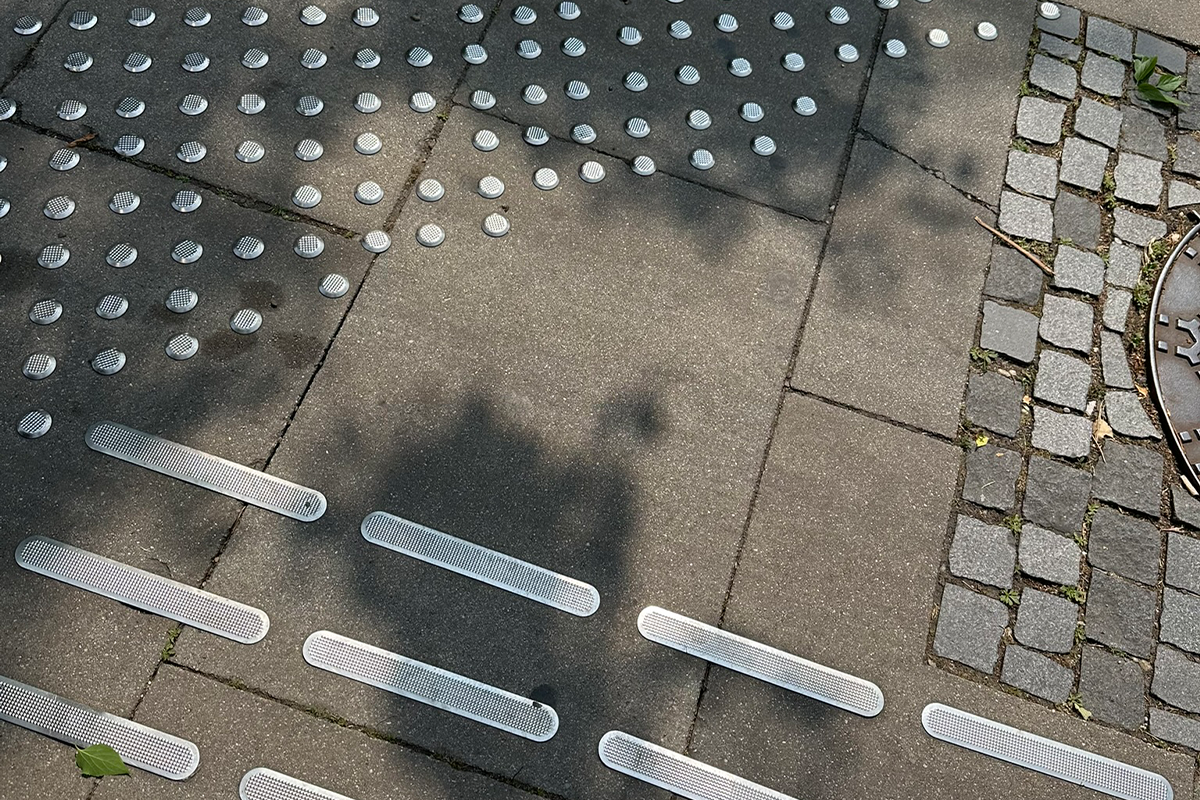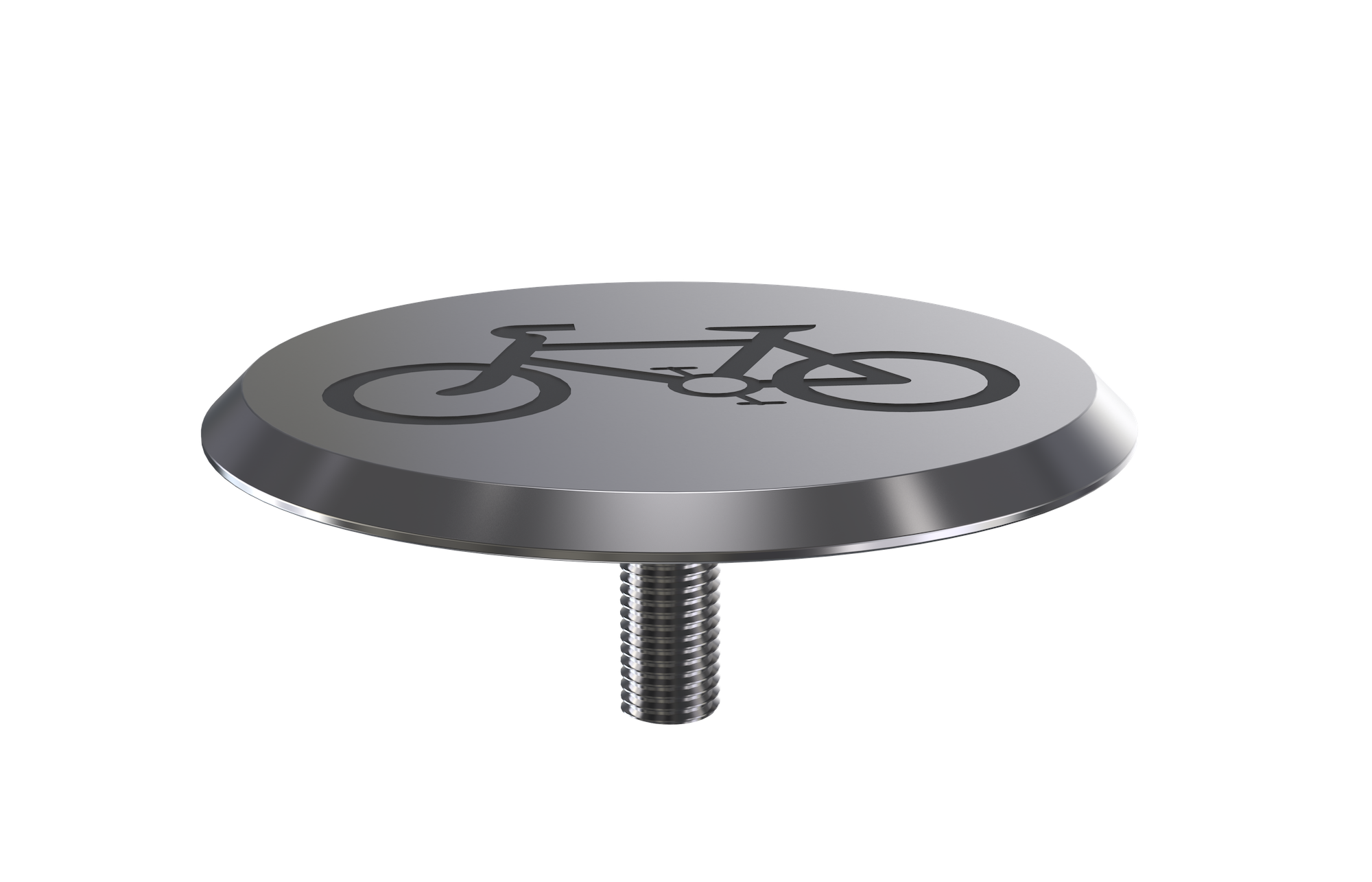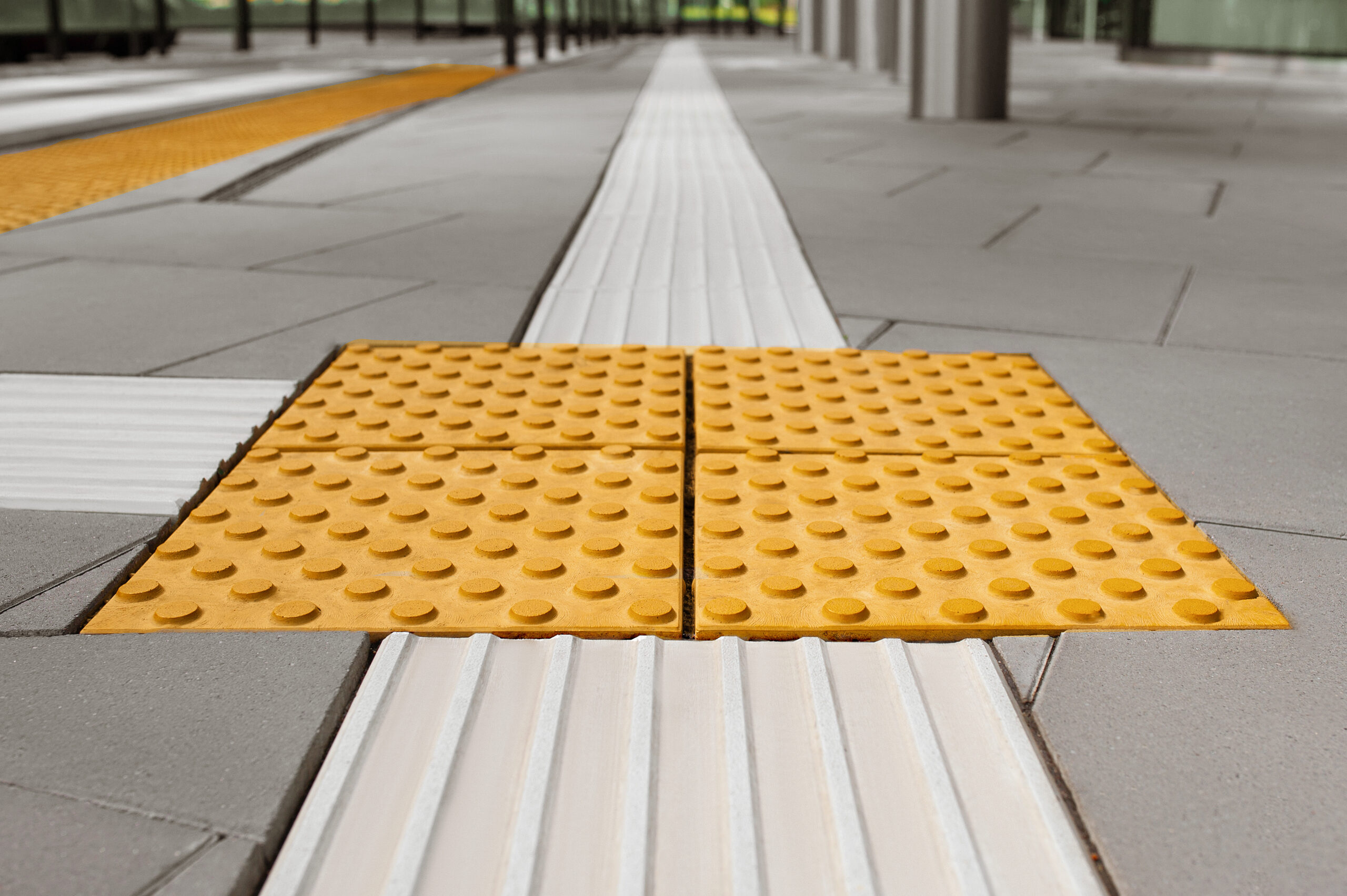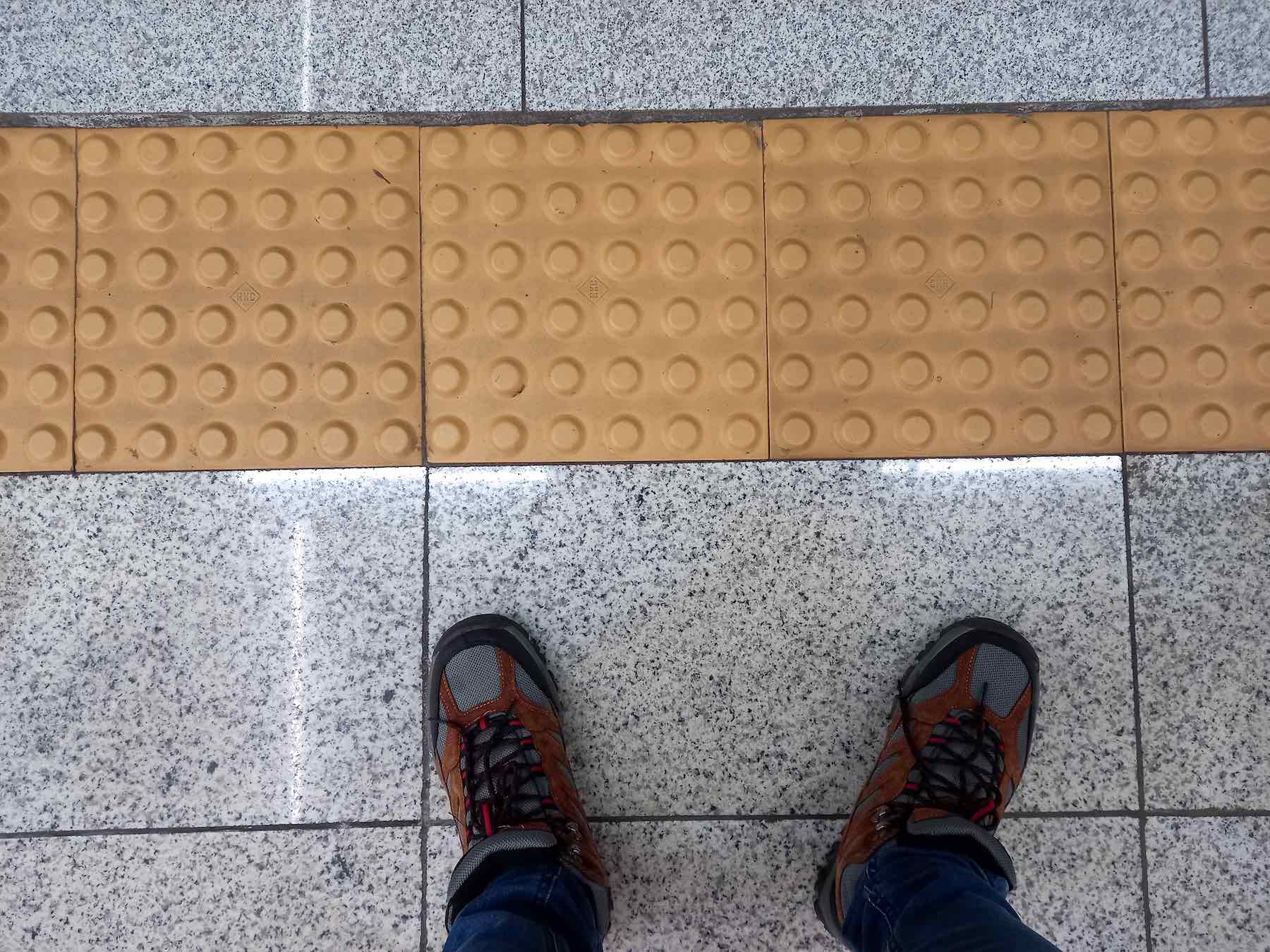Integrating Tactile Surfaces into Accessible Architecture
Blog
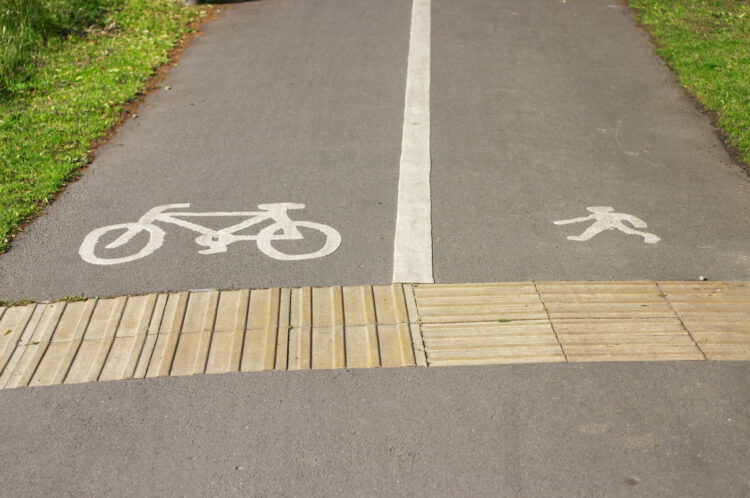

Increasing accessibility using tactile surfaces
Fostering an environment that caters to the needs of all individuals, irrespective of their capabilities, supports an inclusive society. However, accessible architecture is also a means of promoting safety.
It extends beyond physical infrastructure and induces a sense of empowerment in individuals grappling with mobility challenges, visual impairments, and hearing deficiencies. This enables easier navigation and comprehension of their surroundings.
By adopting a proactive and solution-driven mindset, we can effectively incorporate accessibility into our built environment.
How can we make buildings more accessible?
As guardians of the built environment, architects have a duty to ensure that their designs accommodate the diverse needs of all individuals. It is feasible to establish spaces that are accessible and navigable for all with the use of accessibility features that can be assimilated into building designs.
Let us delve into these features to comprehend their significance.
Ramps
Ramps can be installed in place of stairs to provide access to buildings for people who use wheelchairs, walkers, or other mobility devices.
Elevators
Elevators provide access to upper floors and can be used by people with mobility impairments and wheelchair users.
Accessible Entrances
Accessible entrances should have a clear path of travel and be wide enough to accommodate wheelchairs and other mobility devices.
Automatic Doors
Automatic doors can be operated with the push of a button or by motion sensors, making them easier to use for people with mobility impairments or those who use wheelchairs.
Accessible Parking
Accessible parking spaces should be located close to the building entrance and have a clear path of travel to the entrance.
Clear Signage
Signs should be easy to read and placed at an appropriate height for people with varying levels of mobility or visual impairments.
Accessible Toilets
Accessible toilets should have features such as grab bars, wider stalls, and lower sinks to accommodate people with mobility impairments.
Hearing Loops
Hearing loops are systems that transmit sound directly to hearing aids and can be used in public spaces such as lecture halls, theatres, and places of worship.
Visual Alarms
Visual alarms can be used in place of audible alarms to provide notifications for people who are deaf or hard of hearing.
For architects, town planners, and building proprietors, crafting accessible structures and public areas is not a singular task, but a wider undertaking. Accessibility components integrated into designs need to be consistently maintained so that they continue to serve individuals with disabilities effectively.
For instance, automated doors and elevators require regular testing and servicing to guarantee their seamless functioning. Additionally, other assistive technologies, such as hearing loops, will eventually require updating or replacement to keep them in optimal working condition.
By prioritising the upkeep of these accessibility features, we can foster a lasting impact on the well-being and independence of individuals with disabilities.
How accessible is the UK for people with mobility impairments?
In 2022, Age UK Mobility conducted extensive research on various spaces in the UK, including airports, attractions, hotels, restaurants, national parks, and beaches, to assess their accessibility for visitors with mobility issues.
The key findings revealed that:
- 2/10 of the UK’s most-visited paid attractions received a perfect accessibility score.
- Half of the UK’s top 10 most visited free attractions do not have accessible or disabled parking available on site.
- 4/10 of the UK’s top 10 highest rated hotels couldn’t be described as wheelchair accessible.
- None of the top 10 best restaurants in the UK offer a perfect accessibility score.
- The top 10 busiest airports in the UK all have accessible entrances, accessible toilets, accessible parking, and wheelchair hire.
How can we make the built environment more accessible for the visually impaired?
When discussing accessible architecture, it is crucial to acknowledge the significance of incorporating features that cater to individuals with visual impairments. One such feature is the incorporation of tactile surfaces.
Tactile surfaces refer to raised or indented patterns, textures, or symbols on surfaces that can be felt by touch. For instance, a raised surface can indicate the edge of a stair or a pedestrian crossing, providing a clear signal for the individual to proceed with caution. These surfaces can also be used to convey information, such as directional cues, room numbers, or emergency exits. Tactile surfaces allow those who are visually impaired to access services, facilities, and amenities with greater ease.
So, what are tactile surfaces and their benefits?
Tactile Paving
Tactile paving is a type of raised surface with a distinct texture that can be felt under foot or with a cane. There are 6 different types of tactile paving but the most common is blister and offset blister paving. Blister paving is often used to safely guide visually impaired pedestrians at crossings, station platforms, and other public spaces.
Braille Signage
Braille signage is a type of tactile surface that uses raised dots to form letters and words in the Braille alphabet. It is commonly used in public spaces to label rooms, elevators, and other features.
Textured Walls
Textured walls can be used to provide tactile cues and landmarks that can help people with visual impairments navigate indoor spaces. Textures can be achieved using a variety of materials, including stone, brick, or tile.
Tactile Maps
Tactile maps are three-dimensional representations of an area or space that can be explored using touch. They can be useful for providing spatial orientation and helping people with visual impairments understand the layout of a building or neighbourhood.
Tactile Buttons and Controls
Tactile buttons and controls can be used to provide feedback and indicate the function of various devices, such as elevators, ATMs and vending machines. They can be designed with different shapes, textures and colours to make them easily identifiable by touch.
Raised Lettering
Raised lettering is a type of tactile surface that uses raised letters to indicate information on signs or other surfaces. It can be used in conjunction with Braille signage to provide information to people with varying levels of visual impairment.
Designed to complement the overall aesthetic of a building, tactile surfaces create a more welcoming and inclusive built environment for everyone, from public buildings to private properties.
How to implement tactile surfaces in accessible design
Through careful planning and consideration of the requirements of individuals with visual impairments the built environment can significantly enhance inclusivity. Successful implementation relies on strategic placement, such as identifying areas where tactile surfaces will be most beneficial, such as building entrances, stairs and transit stops.
Designing tactile surfaces that provide clear and consistent information may entail using both wall-mounted tactile surfaces and tactile floor indicators. For tactile floor indicators, durability is paramount. These surfaces must be made from quality materials that can endure heavy use and exposure to environmental elements. Moreover, they should be non-slip and slip-resistant to prioritise safety for all users.
Effective tactile surface implementation usually involves gathering feedback from individuals with visual impairments. This feedback is invaluable in making adjustments and enhancements to the design and placement of tactile surfaces. It also means that the tactile language used is familiar and comprehensible to the visually impaired community, in compliance with government guidelines on layout and spacing.
Ongoing maintenance is critical to ensure that tactile surfaces remain in optimal condition. Regular inspections and repairs help to sustain the effectiveness of tactile surfaces, enhancing accessibility.
Overall, incorporating tactile surfaces in accessible design necessitates a collaborative approach involving input from individuals with visual impairments, designers, and other stakeholders. By considering the specific needs of individuals with visual impairments, using the latest technology and materials, and actively seeking feedback, designers can create innovative tactile surfaces that promote accessibility and inclusivity for all.
Need help choosing the right tactile paving, studs or strips for your project? Speak to the team today by calling 01686 807 450 or email [email protected].

